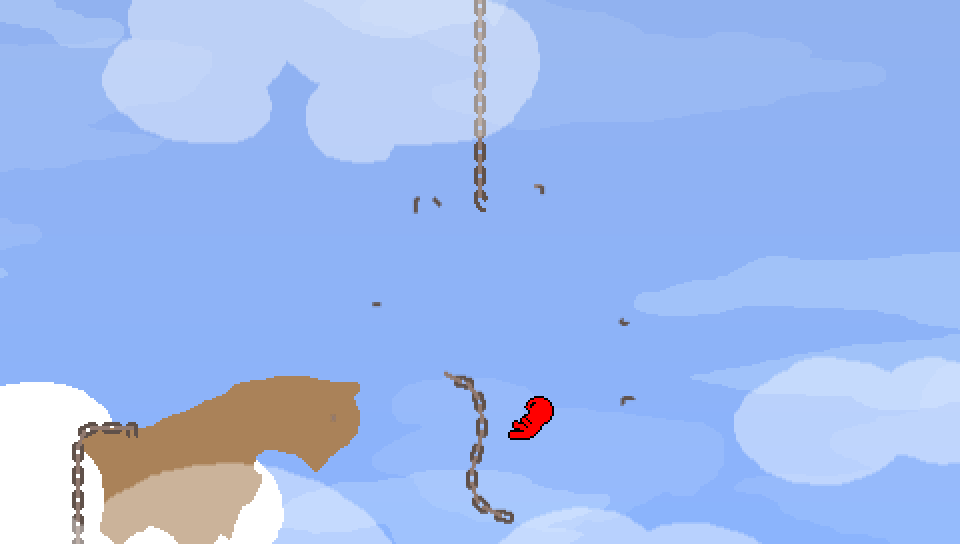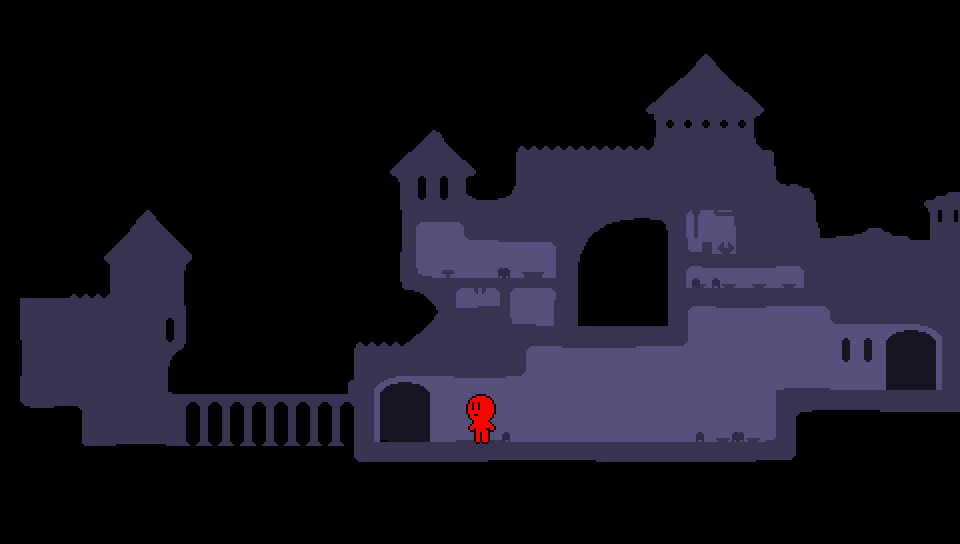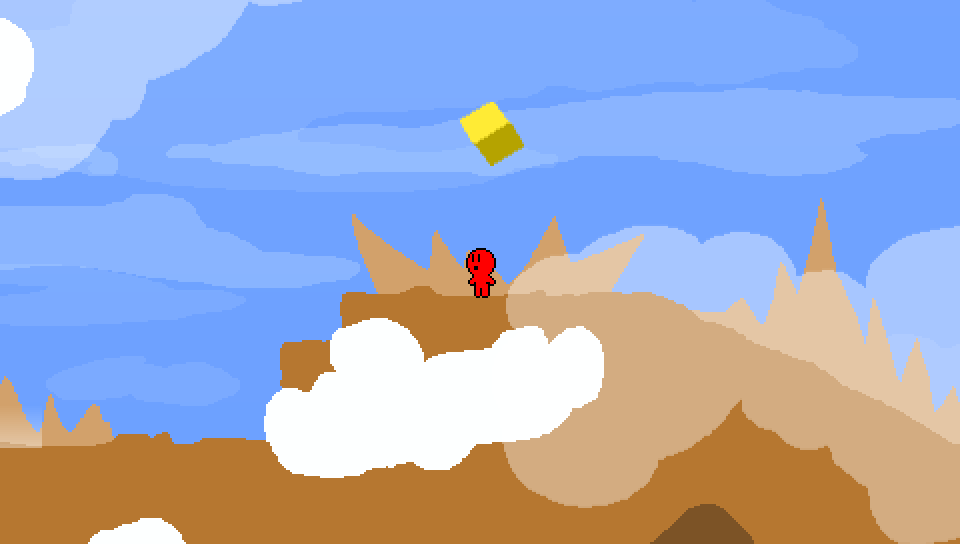Official Site || Steam Page || itch.io Page || Developer’s Site
The inspiration for Hiiro is so blatant that Nifflas and clysm, the creators of Knytt and Seiklus respectively, are thanked in the credits, but this is not at all a downside. This short and comfortably hazard-free exploration platformer comes in at just the right price to make for a relaxing and enjoyable afternoon adventure.
Hiiro is a story told without words, so much so that the title and credits are the only points at which any text appears at all. Though there isn’t any writing, the story is conveyed well through visuals and symbols; the tree in the middle of the protagonist’s floating village is dying and all the other villagers are fading away with it, but a golden cube in the world below can somehow save everything. After the intro a wordless tutorial soon teaches you to move around, double jump, and open up the inventory and map while in the process making it clear that you’ll need to find far more than just one cube. These initial moments of wordless storytelling and teaching serve as fantastically effective and seamless ways of teaching players the basic premise and gameplay elements and this silent method of conveying meaning continues to be utilized throughout the game. As you explore, you’ll come across several murals which can give you a decent idea of the history of Hiiro’s world and puzzle solutions are engraved on various background elements, a design decision which is particularly reminiscent of Seiklus. Overall, the textless design of the game is handled extremely well and it fits perfectly with the completely freeform style of exploration.

The world of Hiiro proves that you don’t need to have enemies, or any form of danger at all for that matter, in a platformer for it to be enjoyable. The very first room of the game gives you a choice between two equally viable paths and nearly every screen from that point on splits into two or three more paths to choose between. With the exception of a single area, every region of the game can be accessed immediately and there is no ‘wrong’ path through the game – you can go anywhere you want at your own pace and even the locked area can be accessed soon enough with little difficulty. From crystal mines to forests to floating islands and more, the areas flow into each other naturally and each one feels distinctive. You can try to scour each and every room for cubes and other secrets, but you’ll still make plenty of progress just by casually roaming around and discovering the world.

There may not be any danger, but that doesn’t mean this game is completely devoid of challenges. Beyond aesthetic differences, each region poses its own obstacles. For example, the forest is basically a giant maze with various doors carved into the trees, the mountains have slippery frozen platforms, and you need to learn to operate and manipulate machinery in the mines. Many of the cubes are also placed behind small puzzles and platforming challenges or hidden within small alcoves indicated by cracks, small symbols, and other suspicious parts of the environment which can be easy to miss if you’re not keeping a sharp eye out for them. None of the challenges found here are all that difficult, but there is still just enough to them that it’s consistently satisfying to find secret passages and solve environmental puzzles and the controls are responsive and fluid enough that the platforming feels good in and of itself.

Though I love the freeform nature of the platforming, the part of Hiiro which impressed me the most is just how flexible the exploration is. This sense of flexibility is made possible in large part by the presence of eight large cubes. While you don’t need to find every single small cube to complete the game, you do need to fight all eight large cubes, each of which is found by completely the main challenge found in a region. Each new large cube you find marks the exact locations of several smaller cubes on the map, even providing the outline for any rooms which you haven’t reached yet. Since the map itself only shows rooms as colored rectangles you still need to find the path leading to each cube, but this can help immensely if you missed a hidden path or two while exploring. Thus, players can choose to test out every suspicious wall they see if they want to, but you are also free to take a much more relaxed approach through the world where you don’t worry about the more well-hidden cubes until they are marked on the map.

Just how much is asked of players is also very flexible. I’m not sure of the exact percentage, but you can safely complete the game while skipping about 10% or so of the small cubes, so players who don’t want to put in the extra effort and backtracking time to get every cube they may have missed don’t have to. Of course, there’s an additional ending for anyone who does decide to go out and collect all the cubes. There are even a few particularly difficult to find items scattered about which don’t show up on the map after collecting the large cubes and finding all of them leads to a great bonus for completionists. Multiple endings and the presence of some optional content on the side may not be all that rare in games, but the way they are implemented here is essential to maintaining the relaxing atmosphere; players aren’t punished with a ‘bad’ or deliberately unsatisfying ending for choosing to only meet the bare minimum collecting requirements, they are simply given a few additional rewards for being more thorough.

The only place in which Hiiro stumbles in its execution, and only very slightly at that, is in its save file system. Save points are plentiful, so finding a spot to save isn’t the issue, but launching the game placed you right at your last save and I could find no way to start a new game from within the game itself. In other words, if you want to start over from the beginning you must manually delete or move your existing save file from within the game’s folder. On the plus side, the save file is clearly labelled and easy to locate and all things considered the lack of an in-game way to start from scratch is a remarkably minor nuisance in an otherwise thoroughly polished game.
With its charming aesthetics and an extremely well-implemented style of exploration, Hiiro makes for a perfectly relaxing experience which you can sit back and enjoy at in your own way at whichever pace you desire.